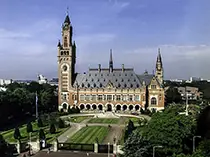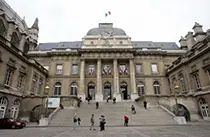Introduction
Uppsala University (Swedish: Uppsala universitet) is a research university in Uppsala, Sweden. Founded in 1477, it is the oldest university in Sweden and all of the Nordic countries still in operation. It ranks among the world’s 100 best universities in several high-profile international rankings. The university uses “Gratiae veritas naturae” as its motto and embraces natural sciences.
The university rose to pronounced significance during the rise of Sweden as a great power at the end of the 16th century and was then given a relative financial stability with the large donation of King Gustavus Adolphus in the early 17th century. Uppsala also has an important historical place in Swedish national culture, identity and for the Swedish establishment: in historiography, literature, politics, and music. Many aspects of Swedish academic culture in general, such as the white student cap, originated in Uppsala. It shares some peculiarities, such as the student nation system, with Lund University and the University of Helsinki.
Uppsala belongs to the Coimbra Group of European universities and to the Guild of European Research-Intensive Universities. The university has nine faculties distributed over three “disciplinary domains”. It has about 44,000 registered students and 2,300 doctoral students.
Campus
The buildings and locations where the university has activities or which are significantly connected to its history are listed below. Some of the historic buildings in central Uppsala have had to be retired, as their protected status has made it impossible to make modifications necessary to meet requirements to adjust to the needs for students with disabilities.
- University of Uppsala Botanical Garden
- University Park and Cathedral area
- Gustavianum
- The Old Consistory building
- The University Hall
- The Ekerman House
- The Dean’s House (or Julinsköld Palace)
- Skytteanum
- The Oxenstierna House (Juridicum – Faculty of Law)
- Regnellianum
- Carolina Rediviva
- West of Central Uppsala
- English Park Campus – Centre for the Humanities (including the Centre for Language Studies)
- Centre for Evolutionary Biology (EBC) including the Museum of Evolution
- University of Uppsala Botanical Garden
- Segerstedthuset – administrative building
- Blåsenhus – Centre for pedagogy, didactics, educational studies and psychology
- Other locations in wider Central Uppsala
- Theatrum Oeconomicum and Gamla Torget (“The Old Forum”)
- The Observatory Park with the old observatory
- Centre for Economic Sciences (Ekonomikum)
- The Linnaeus Garden
- Anders Celsius’s former house and observatory
- Building at Campus Polacksbacken
- South of central Uppsala
- Uppsala University Hospital
- The Rudbeck Laboratory
- Uppsala Biomedical Centre (BMC)
- Geo Centre
- Information Technology Centre (ITC) Pollax
- The Ångström Laboratory
Programs
Science and technology
- Additive Manufacturing, 120 credits – New!
- Applied Biotechnology, 120 credits
- Bioinformatics, 120 credits, specialisations:
- Biology Background
- Computer Science Background
- Biology, 120 credits, specialisations:
- Cell and Molecular Biology
- Ecology and Conservation
- Environmental Toxicology
- Erasmus Mundus Master Programme in Evolutionary Biology (MEME)
- Evolutionary Biology
MEDICINE AND PHARMACY
- Drug Discovery and Development, 120 credits – New!
- Forensic Science, 120 credits
- Global Health, 120 credits
- Infection Biology, 120 credits
- Innovative Medicine, 120 credits – New!
- Medical Nuclide Techniques, 120 credits
- Medical Research, 120 credits
- Molecular Medicine, 120 credits
- Pharmaceutical Modelling, 120
Humanities, 120 credits, specialisations:
- Aesthetics
- Archaeology – Uppsala and Campus Gotland!
- Classical Archaeology and Ancient History
- Cultural Anthropology
- Cultural Heritage and Sustainability – Campus Gotland!
- Egyptology – New!
- Gender Studies – New!
- Philosophy
- Musicology
Campus life
Nations and student union
Up until June 2010 students at Uppsala University were obliged to become members of one of the nations, corporations of students traditionally according to province of origin (not strictly upheld now, for practical reasons). The system of dividing students into nations according to origin can ultimately be traced back to the nations at the medieval University of Paris and other early medieval universities, but the Uppsala nations appear only about 1630–1640, most likely under influence of the Landsmannschaften which existed at some of the German universities visited by Swedish students.
Music
Student singers marching down the staircase in Carolina Rediviva, on the occasion of the 400th anniversary of the university in 1877. The “staircase march” (trappmarschen) when the singers led the audience in a march out of the hall where the concert was held, is an annual tradition that was later moved to the new main university building completed in 1887. (The monumental staircase of Carolina was later sacrificed to create more storage space for books.)
The University’s Royal Academic Orchestra was founded in 1627. Its main purpose is to play at academic ceremonies, but holds concerts on other occasions as well. Its leader has the title of director musices. The position has been held by composers such as Wilhelm Stenhammar, Hugo Alfvén and Lars-Erik Larsson. Affiliated with the University are three choirs, the mixed Uppsala University Choir (Allmänna Sången), founded in 1830, the male choir Orphei Drängar, founded in 1853, and the Academy Chamber Choir of Uppsala, founded in 1957. A number of other choirs and orchestras are affiliated with the nations.
Housing
One of the most popular housing accommodations for the students are Flogsta, Kantorsgatan, Studentstaden, Studentvägen, Klostergatan, Rackarbergsgatan and many more. Flogsta is one of the biggest and most popular housing choice for international students.
























